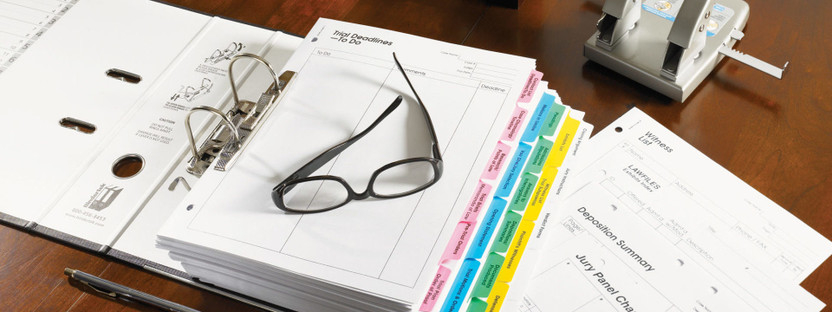Setting Up a Legal Binder 101
Posted by Bindertek on Aug 18th 2017
Attorneys know that organization is key, and binders offer a quick and easy way to organize cases. Index tabs provide a map for the binder, allowing you to access any document you need immediately. Whether you are handling a criminal trial, estate planning, or a bankruptcy, the appropriate binder setup will make your job easier.
Choose Your Binder
Your binders should work for you, rather than you struggling to make an imperfect binder fit your needs. Choose the size and style of binder that suits your practice and the type of cases you tend to accept. Do you need a 2-Ring or 3-Ring Binder? What about a specialty size like Legal or Ledger? Make these decisions in advance and be consistent throughout your organization system.
Organize Your Binder
Add the necessary index tabs, pockets, sheet protectors, and accessories to create a filing system that works for you and your paralegals. Consider starting with one of Bindertek’s specialty legal index tab sets, or create your own custom tab set for a truly bespoke system. Make sure you have the correct hole punch on hand to easily add documents to your binder.
Don’t Forget What’s Important
The most important part of your binder is its contents! Take time to collect everything you already have, if you’re building the binder for an existing case, or set up the binder in advance for a new case. Having an organized paper flow system will ensure your binders are comprehensive logs of each case, and you’ll have everything close at hand for meetings or court dates.
Aside from the crucial case documents, consider including:
- A calendar or timeline section to keep track of important due dates.
- Sections to add case notes.
- A tracking system for your billable hours.
Secure Storage
Plan ahead for short-term and long-term storage to avoid frustration down the road. Rotating binder carousels take up less floor space and allow for easy access of current case files. When cases are closed, consider archiving your binder contents using transfer clips and file cartons to free up binder space for new clients.
Getting organized as a lawyer doesn’t have to be difficult when you’re equipped with the right tools. A binder system is self-contained, flexible, and can be constantly adapted to you and your firm’s needs.

